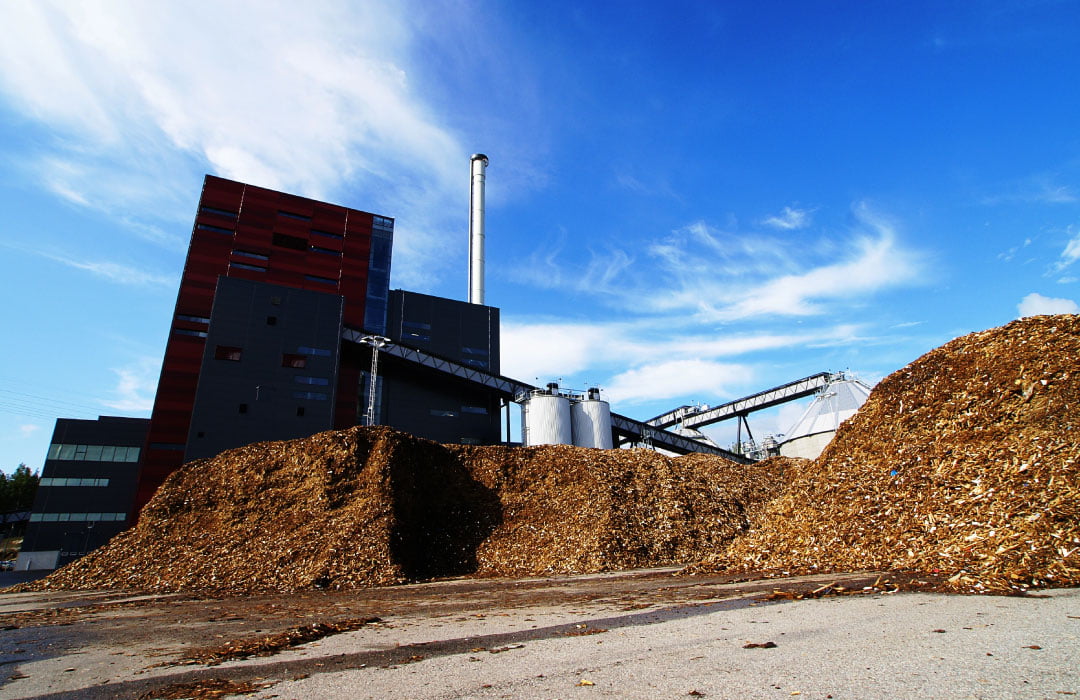Understanding Biomass as an important part of the Energy Transition
After spending many years in Queensland, Australia, I became well-aware of the practice of burning sugar cane before harvesting. I also worked on projects that involved using sugar to produce ethanol for fuel and utilizing bagasse to generate electricity.
Yet, until less than five years ago, my approach to biomass as a pathway to green energy and as an essential part of the circular economy was based on misunderstandings. Let me explain:
I was in Colombia for Xmas and there was an outbreak of Covid which meant we were largely confined to the family home. John Taylor Martin, Chairman of Pan Ocean Advisory Group POAG) based in Hong Kong and Vancouver, Zoomed me. He had a client, Urbenex Bioenergy, based in Vancouver, who had developed a technology to recycle all the waste from dairies with an immediate application in California and with potential clients line-up.
I spoke to our team and clearly, they had knowledge, and I needed to catch up. The first learned is it was not simply the burning of waste to reduce the volume to go to landfill. If we get it right, nothing goes to landfill, and we are a part of the circular economy.
As this Sunday I look at my in-box we have material coming in from projects in 1) ADX (a reed) near Clark in the Philippines, 2) Bana Grass in Queensland Australia, 3) Sargassum (a seaweed) on Barbados Island and 4) an Elephant Grass derivative to be grown for power in the Llanos Orientales of Colombia. We are seeing waste-to-energy opportunities in Melbourne Australia, Bangkok Thailand, and across Indonesia. Our friends at Urban Bioenergy have an operating project and 16 projects as work-in-hand. This is something to feel good about and be proud of for the Projects RH team and our clients.
Hopefully, this article will explain why, where, and when, the team at Projects RH can assist with biomass-to-energy projects.
What is the role of biomass?
In recent years, there has been a growing global concern about the long-term negative impacts of fossil fuel-based energy sources on the environment. As a result, the demand for cleaner and more sustainable energy alternatives has been on the rise.
One of the most promising solutions to this problem is the use of biomass as a renewable energy source. Let´s dive into the concept of biomass and how it can be utilized to create green energy.
Biomass can be defined as any organic material from living or recently living organisms that can be used as a source of energy. This includes materials such as plants, trees, crops, wood, animal waste, and even human waste. In its hybrid forms can be sources from even our home waste.
Biomass is considered a renewable energy source because it can be replenished naturally within a relatively short period. This definition means we can use a wide variety of things as part of the biomass process.
What we have seen at Projects RH is specialist-efficient technologies for different inputs. Some of these technologies are capital intensive and supported by complex financial structures, special loans, tax incentives, grants and subsidies.
Our work in the USA sees significant differences in what is available between States, and in Europe between members of the European community. Many nations offer incentives for where they want jobs or recognize that these supports can achieve other economic objectives. A detailed discussion of financing incentives is beyond the scope of this article but clearly something we assist our clients to communicate to their potential investors.
Biomass plays a crucial role in the energy mix by providing a renewable and sustainable source of energy that can complement other renewable sources like solar and wind. It can be stored and released as required.
From Biomass to Electricity
In our modern world, most of the energy we use is consumed as electricity – it is the source of much of our urban comfort as is so convenient and dependable. As such, the energy challenge to most nations is to supply electricity across the nation.
The process of converting biomass into energy is referred to as bioenergy or biofuel production. There are several methods for creating green energy from biomass, including combustion, gasification, and fermentation. This is often called WTE (waste to energy.:
Combustion:
This is the most used method for converting biomass into green energy. It involves burning organic materials in a controlled environment to produce heat, which can then be used to generate electricity or heat homes and buildings. Biomass combustion produces carbon dioxide, but since the plants absorb this carbon dioxide during their growth, it is considered carbon-neutral. This creates a closed carbon cycle, making biomass a sustainable alternative to fossil fuels.
Gasification:
In this process, biomass is heated to high temperatures in an oxygen-starved environment, producing a mixture of gases known as syngas (synthesis gas). Syngas can be used to power turbines and generators to produce electricity or can be converted into liquid fuels such as ethanol or diesel. One of the things that can be done is to store the syngas for when it is needed – say at night or in the winter when energy demand is higher. Gasification is a more efficient process compared to combustion as it produces fewer emissions and can use a wider variety of biomass feedstock. It also has the added advantage of producing by-products such as biochar, which can be used as a soil amendment. When we work with waste to energy projects the gasification process is the most common.
Fermentation:
Fermentation is a biological process that converts biomass into fuels such as ethanol and biodiesel. Microorganisms, such as bacteria and yeast, are used to break down the sugars present in biomass into alcohol, which can then be used as fuel. Such fuel and the associated heat can be used to produce electricity or power engines.
Anaerobic digestion
Anaerobic digestion is another method for producing electricity from biomass. This process involves breaking down organic materials in the absence of oxygen to produce biogas, which is then used to power generators and produce electricity. Anaerobic digestion is particularly useful for managing organic waste such as food waste and animal manure, as it not only produces electricity but also reduces the amount of waste sent to landfills. This is the process applied by Projects RH’s client Urbenex Bioenergy.
Why Use Biomass as a Source of Green Energy?
Benefits of Using Biomass for Green Energy:
Reduces Dependence on Fossil Fuels: Biomass can be grown and harvested locally, reducing the need for importing fossil fuels from other countries. It reduces local dependence on non-renewable resources and increases energy security, especially in remote communities.
Carbon Neutral: The combustion of biomass is considered carbon-neutral because the carbon dioxide released during the process is offset by the amount absorbed by plants during their growth. This makes it a cleaner alternative to traditional fossil fuels, which contribute significantly to greenhouse gas emissions.
Waste Management Solution: Biomass energy production can help in managing organic waste materials that would otherwise end up in landfills and contribute to pollution. By using these waste materials for energy production, we can reduce the amount of waste that ends up in landfills and reduce the production of harmful gases from decomposing waste.
Local Job Creation: The production and use of biomass for energy creates job opportunities in various sectors such as farming, harvesting, transportation, and manufacturing/energy production. This can have a positive impact on local economies and help in reducing unemployment rates. It can be used to create jobs where projects closed such as coal mines create unemployment. This can create local jobs where and when needed and reduce the pressure on the growth of cities.
Versatility: Biomass can be converted into various forms of energy, such as electricity, heat, and liquid fuels, making it a versatile energy source. This versatility allows for its use in different industries, such as transportation, power generation, and heating and cooling systems. In particular, the energy can be converted into hydrogen/ammonia stored and sold.
Biomass can also be used to produce biofuels such as ethanol and biodiesel, which emit significantly lower levels of greenhouse gases compared to fossil fuels. These biofuels can be used as a substitute for gasoline and diesel, reducing our reliance on non-renewable sources of energy and ultimately lowering our carbon footprint.
One of the great benefits of using waste to energy is it captures gas which would otherwise enter the atmosphere from the decomposition of organic waste in landfills produces methane gas, which is a potent greenhouse gas. By diverting organic waste to anaerobic digesters to produce biogas, we can prevent the release of this harmful gas into the atmosphere. This helps in reducing the environmental impact of landfills and mitigating waste disposal problems.
Unlock the power of biomass
Biomass is a valuable source of renewable energy and can be a useful tool for public policy. It has the potential to play a crucial role in the generation of electricity. Its various methods of production make it a versatile and efficient option for producing electricity. With its numerous benefits including sustainability, reduced emissions, and economic growth, it's no surprise that biomass is gaining momentum in the world of renewable energy.
As we continue to strive towards a more sustainable future, the power of biomass will undoubtedly play an important role in meeting our energy needs.
Biomass has also been gaining increased attention in recent years in the issue of stopping landfills. One of the main reasons for its growing popularity is that it can produce methane and other gases. In turn, this allows for the generation of electricity – the essential energy for the 21st century on demand.
In each country, we must watch and follow the impact of the USA’s Inflation Reduction Act. Should other countries follow Europe and the USA and impose tariffs on countries that do not face the same energy costs as we do so local businesses can compete?
Now every time you catch a bus look and see if it is powered by Renewable Natural Gas or Energy – this will tell you if the operator really cares for its community. Then post a comment on social media and on the Projects RH website blog page.
And, if you have a biomass project, please send you materials to paulraftery@projectsrh.com and then book a time to speak at https://outlook.office365.com/owa/calendar/PaulRafteryProjectsRH@projectsrh.com/bookings/ Please allow me 24 hours to send a link and read your summary.
Gain Investor Confidence with Projects RH: Effectively prepare your biomass-to-energy project for success in securing the funding you require.
Unlock the power of biomass and join the exciting journey toward a more sustainable tomorrow!
Disclaimer: This article was written with the aid of AI and reviewed and edited by a human.







